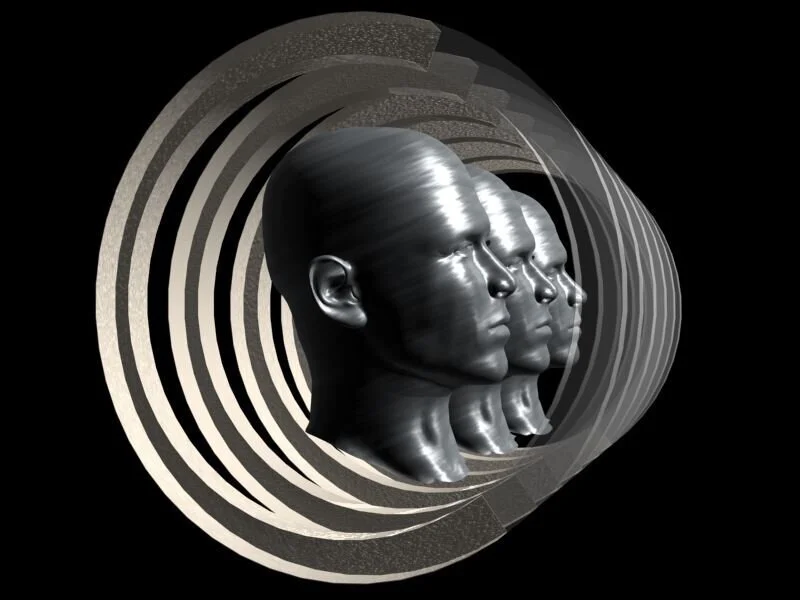The Impact of Hypnosis on Brain Function
Hypnosis: What We Know
Some people are more hypnotically gifted than others. We still do not know the reason why, but scientific research is getting us closer.
A landmark study by Dr. David Spiegel and colleagues found a distinctive signature in the brain when a patient has undergone hypnosis. Functional and structural MRI scans of the brains were performed on 12 adults with high hypnotisability and 12 adults with low hypnotisability.
“Our results provide novel evidence that altered functional connectivity in the dorsal lateral prefrontal cortex and the dorsal anterior cingulate cortex may underlie hypnotisability.” Spiegel also said the work confirms that hypnotisability is less about personality variables and more about cognitive style. “Here we are seeing a neural trait.”
I have calculated my own hours in the field of hypnosis: in 35+ years, I hypnotized well over 100,000 people. As a result, I have become acutely aware of the subtleties and nuances for successful outcomes in hypnotized subjects.
My experience of how people relate to hypnosis:
To a degree, everybody can be hypnotised
Success is primarily based on the facilitator
Even those with low levels of hypnotisability can improve their ability
Those who say they cannot be hypnotised typically have a high desire to experience it
Every research article has limitations; hypnosis has them in abundance
Hypnosis is understood scientifically as a waking state of awareness where a person's attention is detached from their immediate environment and absorbed by inner experiences such as feelings, cognition, and imagery. It is not a therapy in itself, but rather a tool that facilitates the delivery of therapy by increasing the effectiveness of suggestion and access to mind/body connections or unconscious processing.
Recent advances in neuroscience have begun to illuminate the brain mechanisms underlying hypnotic states. Neuroimaging research, including functional magnetic resonance imaging (fMRI), has identified specific brain regions and networks that show altered activity and connectivity during hypnosis.
Key scientific findings about hypnosis include:
Brain Activity Changes: During hypnosis, there is a decrease in activity in the dorsal anterior cingulate cortex, a part of the brain's salience network, which is associated with reduced worry and increased absorption.
Increased Connectivity: Hypnosis is characterized by an increase in connections between the dorsolateral prefrontal cortex and the insula, suggesting enhanced brain-body processing and control.
Reduced Connectivity: There is also a reduction in connections between the dorsolateral prefrontal cortex and the default mode network, which may lead to a disconnect between actions and awareness of those actions, allowing for less self-consciousness during suggested activities.
Neural Correlates of Suggestion: When individuals imagine something under hypnosis (e.g., color, sound, physical activity, pain), similar brain areas are activated as when they experience these sensations in reality. For instance, both physically induced and hypnotically induced pain activate areas associated with the classic "pain matrix".
Hypnotizability as a Trait: Not everyone can be hypnotized, and research indicates that hypnotizability is a genetic trait that follows a bell-shaped distribution, with about 10% of the population being highly hypnotizable. Studies have shown that highly hypnotizable individuals exhibit greater co-activation between components of the executive-control network and the salience network, particularly between the left dorsolateral prefrontal cortex and the dorsal anterior cingulate cortex. This suggests that hypnotizability is more about cognitive style than personality.
Clinical Efficacy: Extensive meta-analyses and randomized controlled trials support the efficacy of hypnosis for various mental and somatic health concerns. The most robust evidence points to its effectiveness in managing pain, aiding patients undergoing medical procedures, and in pediatric populations. Hypnosis has shown significant positive effects in reducing anxiety, nausea, and vomiting, and can be a cost-effective intervention. For example, a randomized control trial involving breast cancer patients showed reduced medical costs with hypnosis intervention for controlling side effects after surgery.
Safety: Hypnosis is generally considered a safe intervention with a very low incidence of adverse events. Serious adverse events attributable to hypnosis are rarely reported.
Mechanism of Action: Hypnosis works by modulating activity in brain regions associated with focused attention, allowing for heightened focus and concentration. It leverages the brain's capacity for suggestion and imaginative involvement, making what is imagined feel real.
While significant progress has been made in understanding the scientific basis of hypnosis, ongoing research aims to further explore how functional networks change during hypnotic states and to investigate moderators of efficacy to determine what works best for whom.
AUTHORITATIVE SOURCES
Hypnosis: A Useful Tool in Palliative Care. [pmc.ncbi.nlm.nih.gov]
Not getting sleepy? Research explains why hypnosis doesn't work for all. [med.stanford.edu]
The Efficacy of Clinical Hypnosis: An Umbrella Review of Meta-Analyses. [pmc.ncbi.nlm.nih.gov]
Study identifies brain areas altered during hypnotic trances. [med.stanford.edu]
Related research articles
